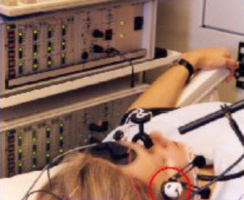.gif) VIARTIS � |
||||||||||||
| � |
�PARKINSON'S DISEASE NEWS |
� | ||||||||||
|
� � � � � |
Parkinson's Disease News covers all significant new research, reports, books, and resources concerning Parkinson's Disease. Articles are chosen on the basis of their medical significance or potential interest. Our overwhelming priority is the facts, regardless of whether they contradict prevailing views or vested interests. Analysis and further information are provided either to explain the background or implications, or to balance misleading claims. If you notice errors or inadequacies, or dispute what is written, or want to propose articles, please e-mail [email protected].
� 2nd December 2014 - New research SONOGRAPHY FOR DIAGNOSIS OF PARKINSON'S DISEASE
Transcranial sonography is a non-invasive diagnostic technique that makes use of sound waves to create a digital image to aid the diagnosis of Parkinson's Disease.
The primary area of the brain concerning Parkinson's Disease is the substantia nigra. The substantia nigra echogenic area was found to be larger in those people with Parkinson's Disease. Substantia nigra echogenicity was also larger in males than in females. Age did not correlate with substantia nigra echogenicity in any group. After multivariate analysis, only the substantia nigra hyperechogenicity was associated with the diagnosis of Parkinson's Disease. Transcranial sonography consequently showed good diagnostic validity for the diagnosis of Parkinson's Disease. However, in a previous study the diagnostic accuracy in the early stages of Parkinson's Disease was not sufficient for routine clinical use. Reference : Journal of Ultrasound in Medicine [2014] 33 (12) : 2069-2074 (A.Alonso- C�novas, J.L.L�pez-Send�n, J.Buis�n, A.deFelipe-Mimbrera, M.Guill�n, N.Garc�a-Barrag�n, I.Corral, M.C.Matute-Lozano, J.Masjuan, J.C.Mart�nez-Castrillo, U.Walter) Complete abstract� For more news go to Parkinson's Disease News
|
� � � � � � � � � � � � � � � |
||||||||||
.gif) |
||||||||||||
| � | ||||||||||||
| �2006-2014� Viartis | ||||||||||||
| � | ||||||||||||
| 2014-12-26 16:45:05 | ||||||||||||
| � | ||||||||||||
| [email protected] | ||||||||||||
 ��� �
��� �
 �����
�����
 �� ��
�� ��
 ����
����
 ��� �
��� �
 ����
����
 ����
����
 ����
����

 The
sound waves are typically produced by a transducer. Strong, short electrical
pulses from the ultrasound machine make the transducer ring at the desired
frequency. Materials on the face of the transducer enable the sound to be
transmitted efficiently into the body. The sound wave is partially reflected
from layers between different tissues. Sound is reflected anywhere there are
density changes in the body. Some of the reflections return to the
transducer. The return sound wave vibrates the transducer, which turns the
vibrations into electrical pulses that travel to the ultrasonic scanner
where they are processed and transformed into a digital image. For more
information go to
The
sound waves are typically produced by a transducer. Strong, short electrical
pulses from the ultrasound machine make the transducer ring at the desired
frequency. Materials on the face of the transducer enable the sound to be
transmitted efficiently into the body. The sound wave is partially reflected
from layers between different tissues. Sound is reflected anywhere there are
density changes in the body. Some of the reflections return to the
transducer. The return sound wave vibrates the transducer, which turns the
vibrations into electrical pulses that travel to the ultrasonic scanner
where they are processed and transformed into a digital image. For more
information go to
 E-MAIL NOTIFICATION : If you would like to be
notified by e-mail when any new articles are added to Parkinson's Disease News,� please merely
e-mail
E-MAIL NOTIFICATION : If you would like to be
notified by e-mail when any new articles are added to Parkinson's Disease News,� please merely
e-mail
